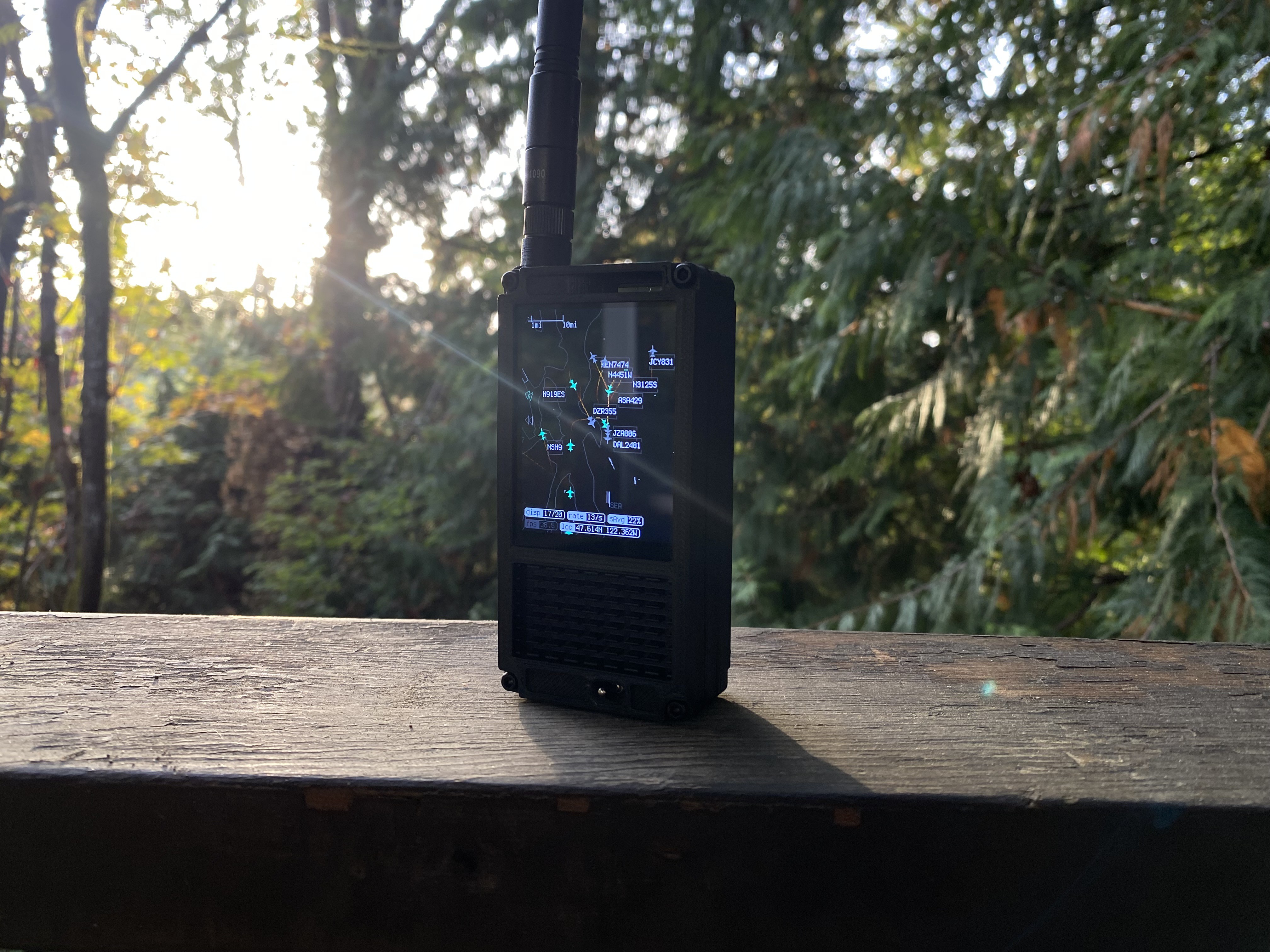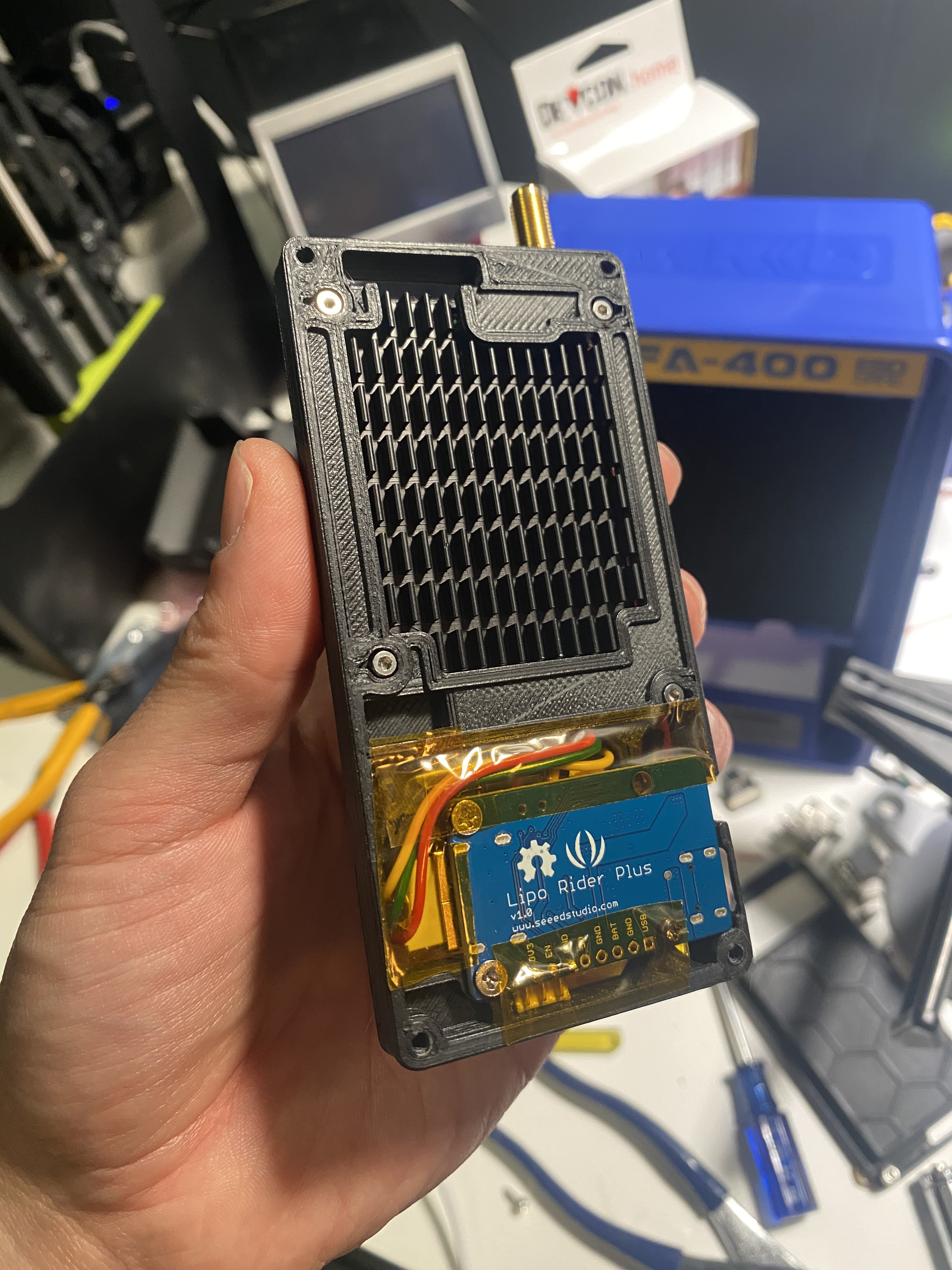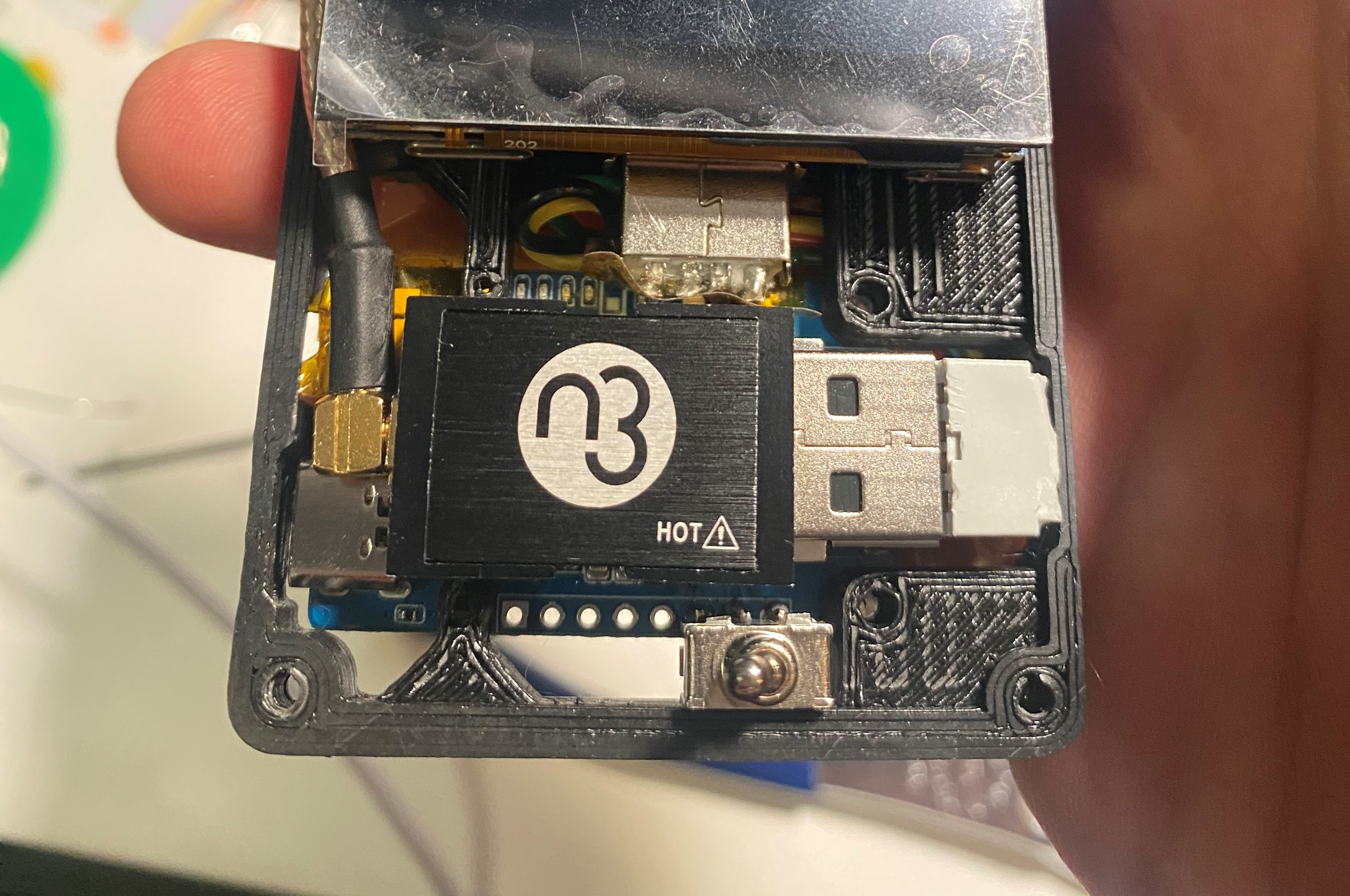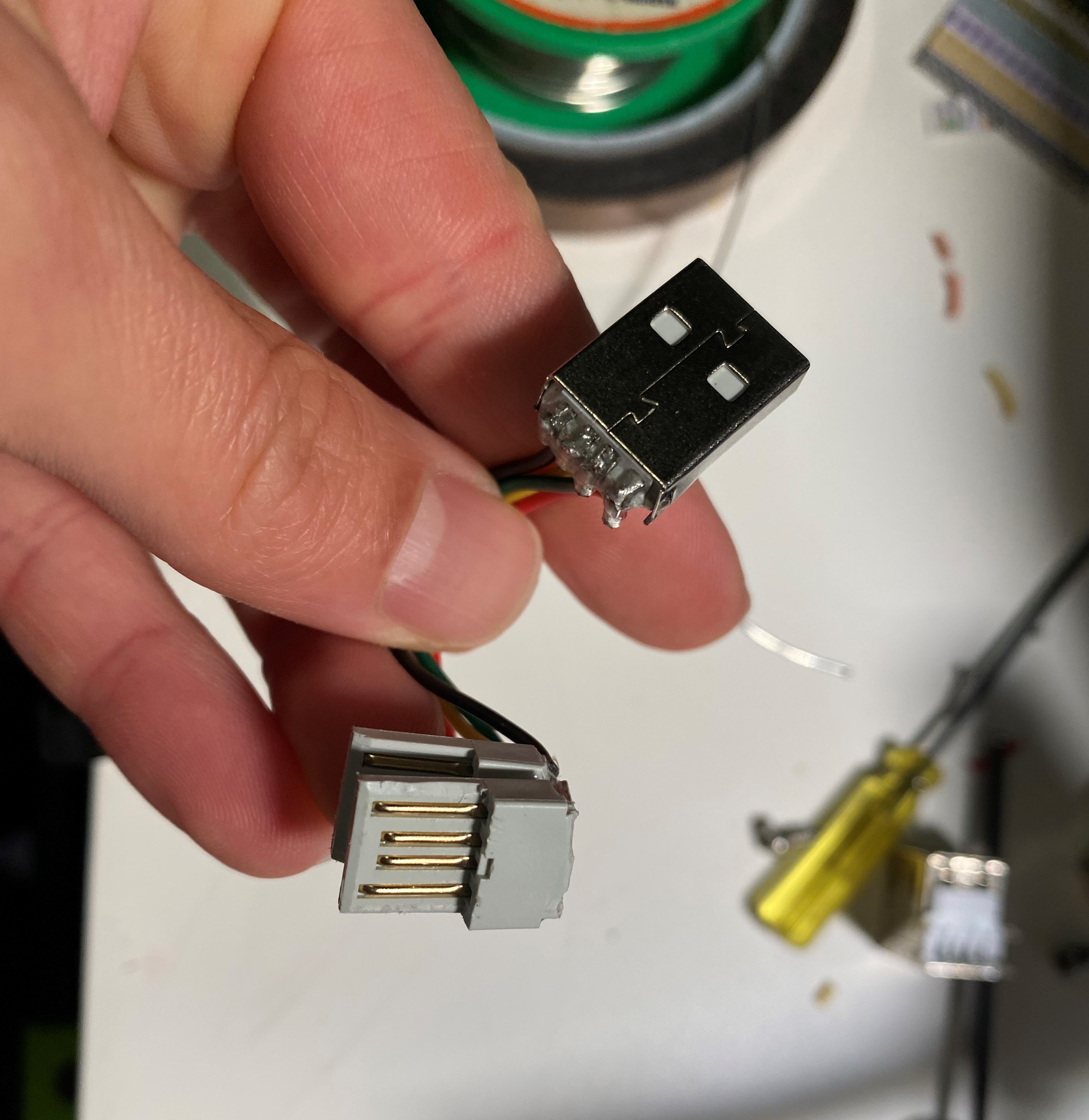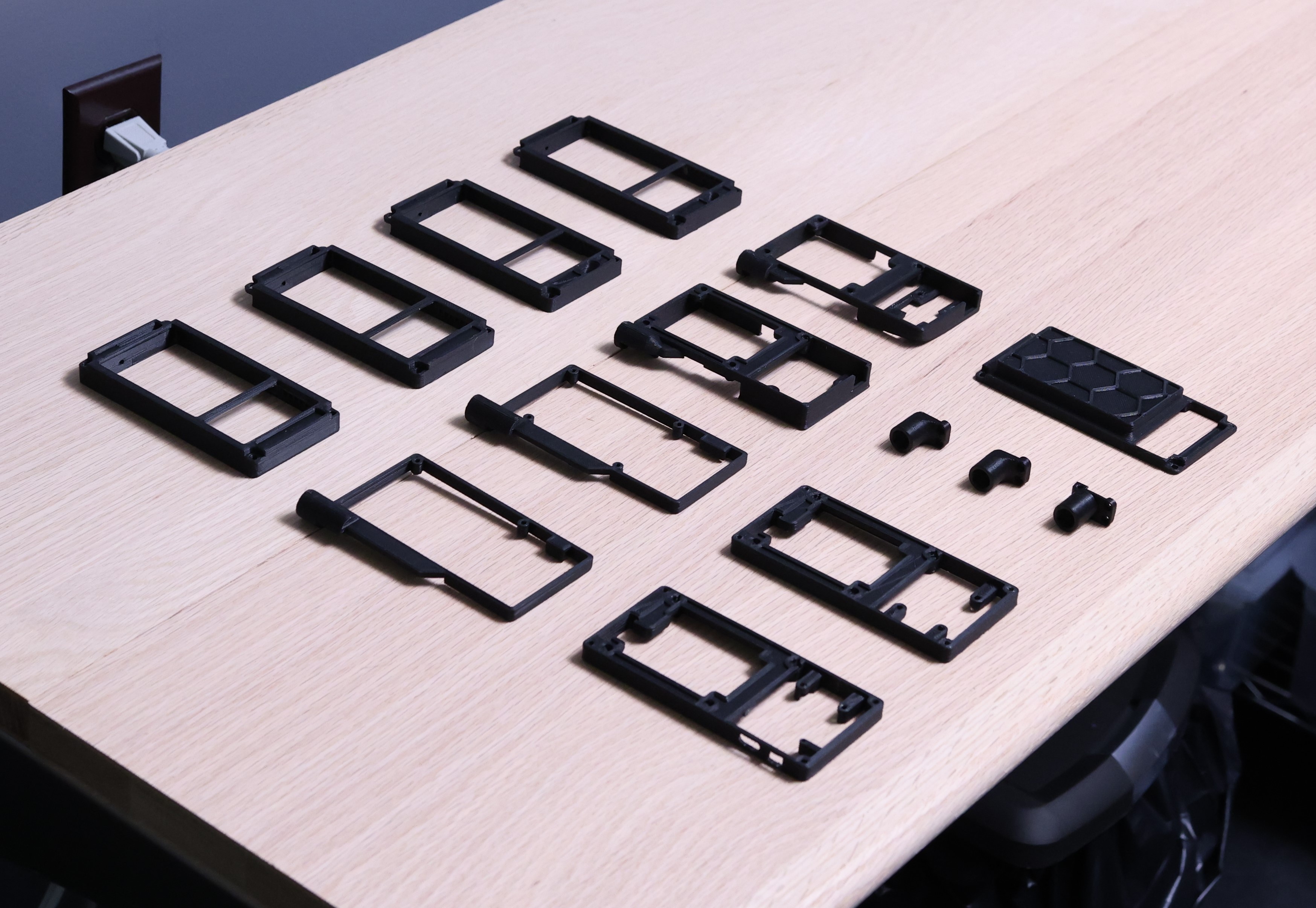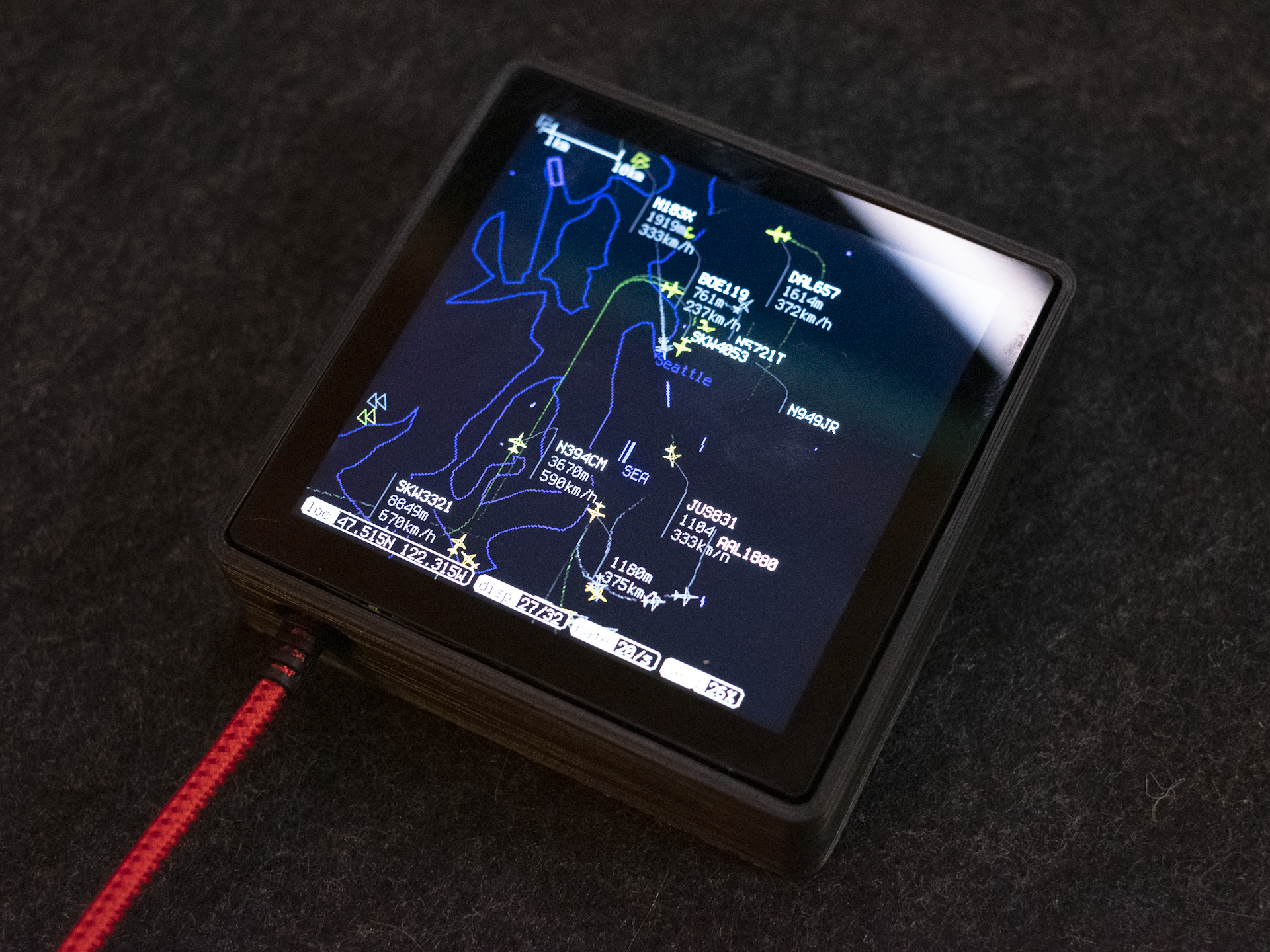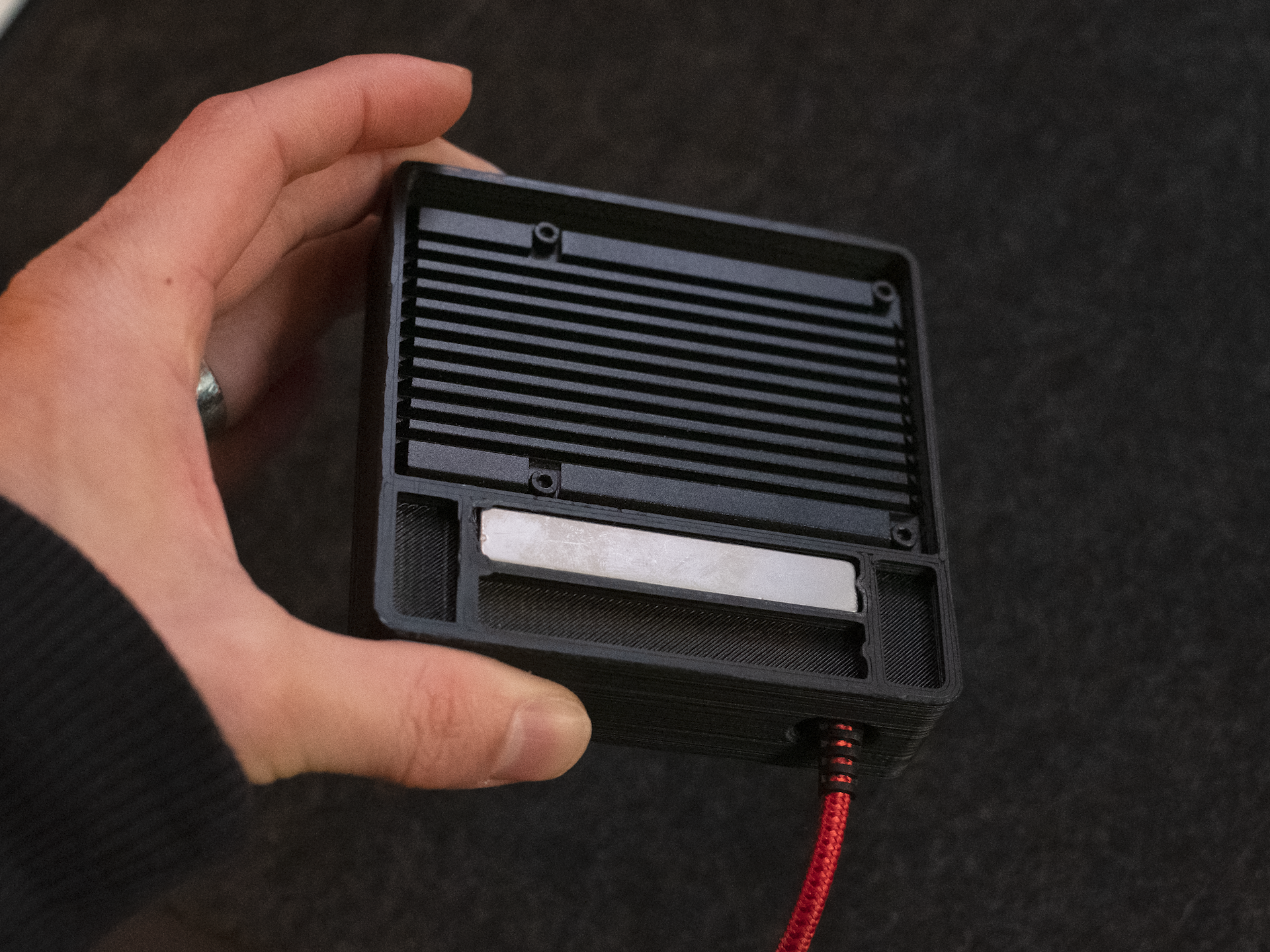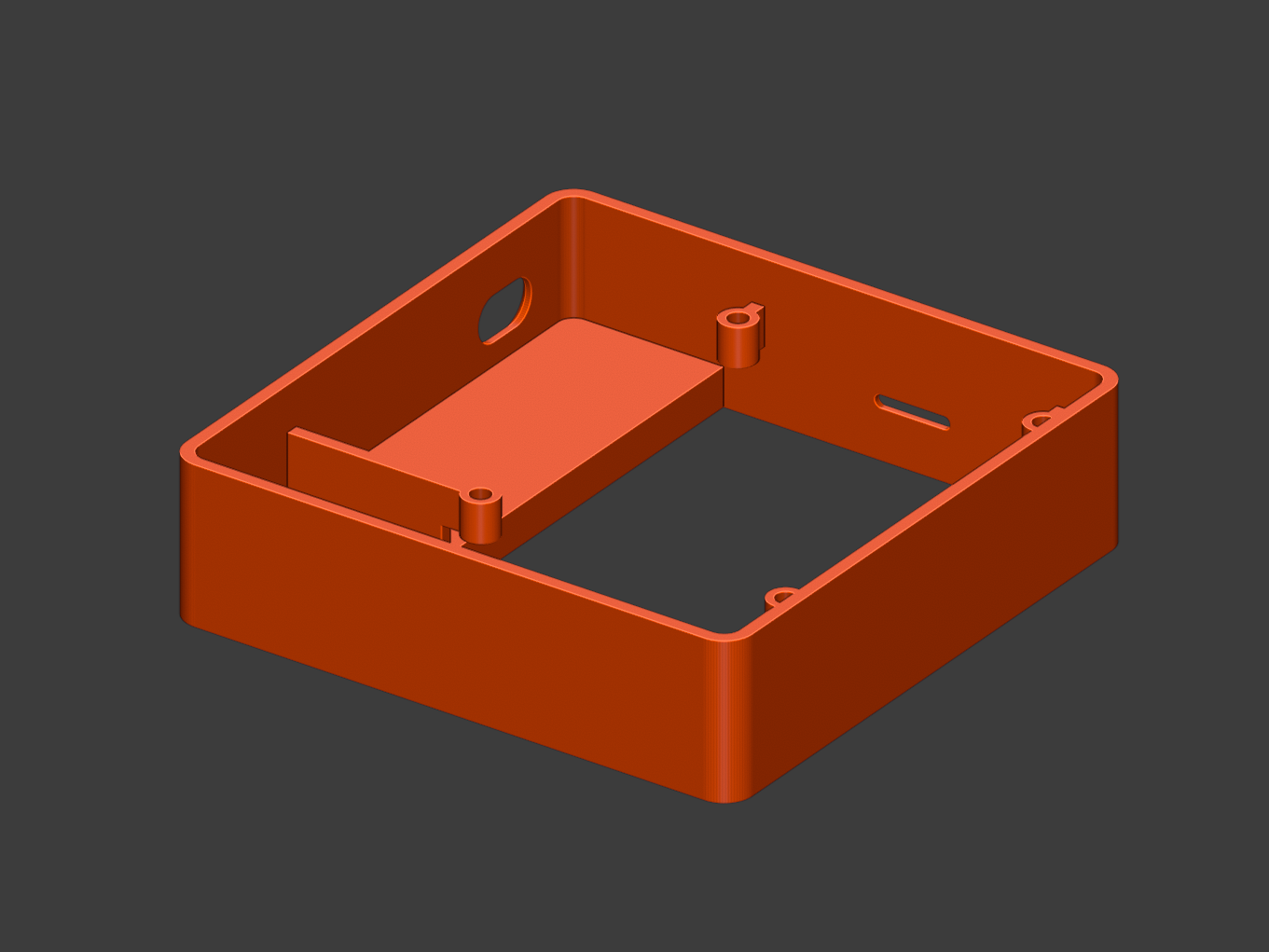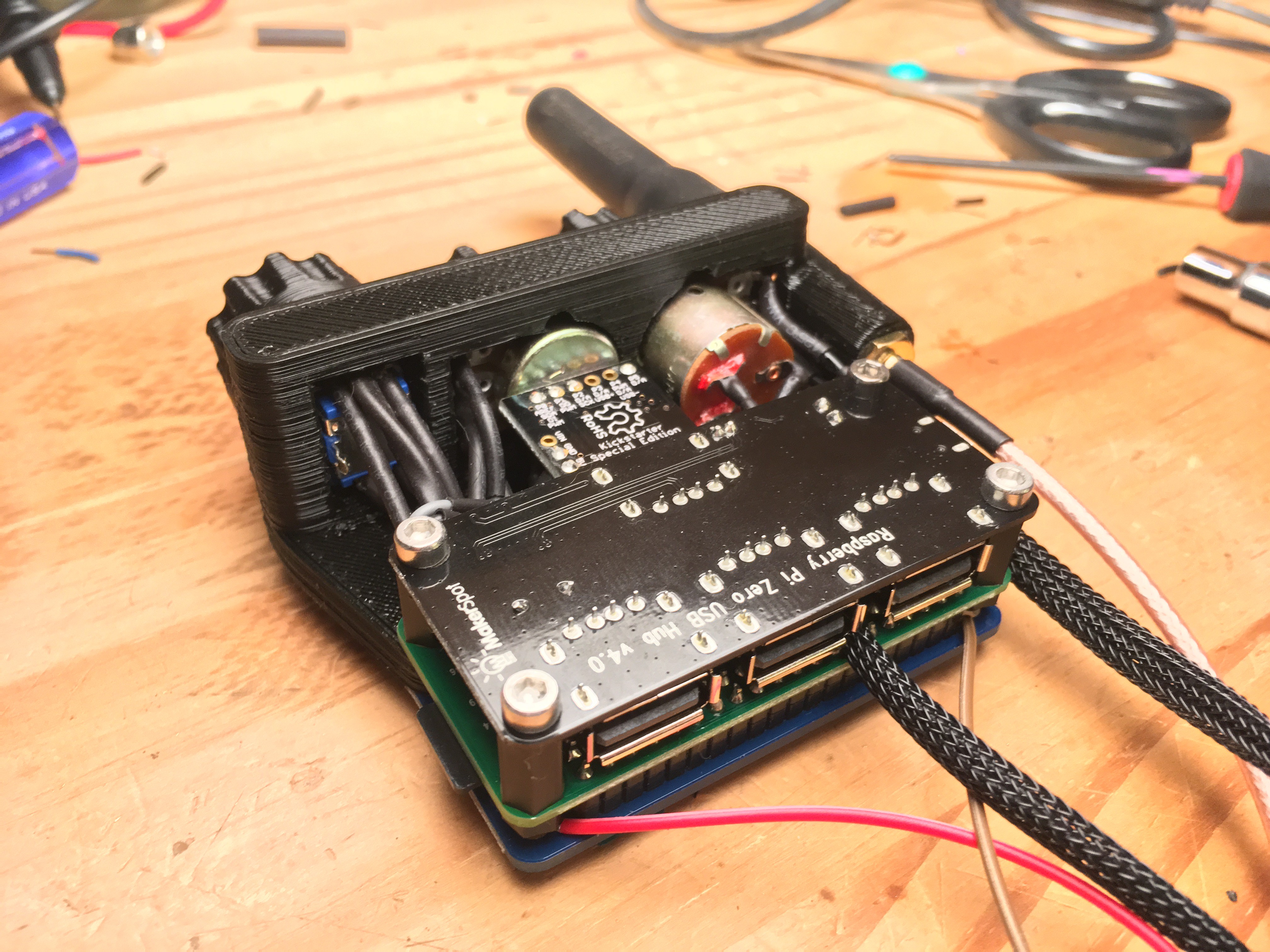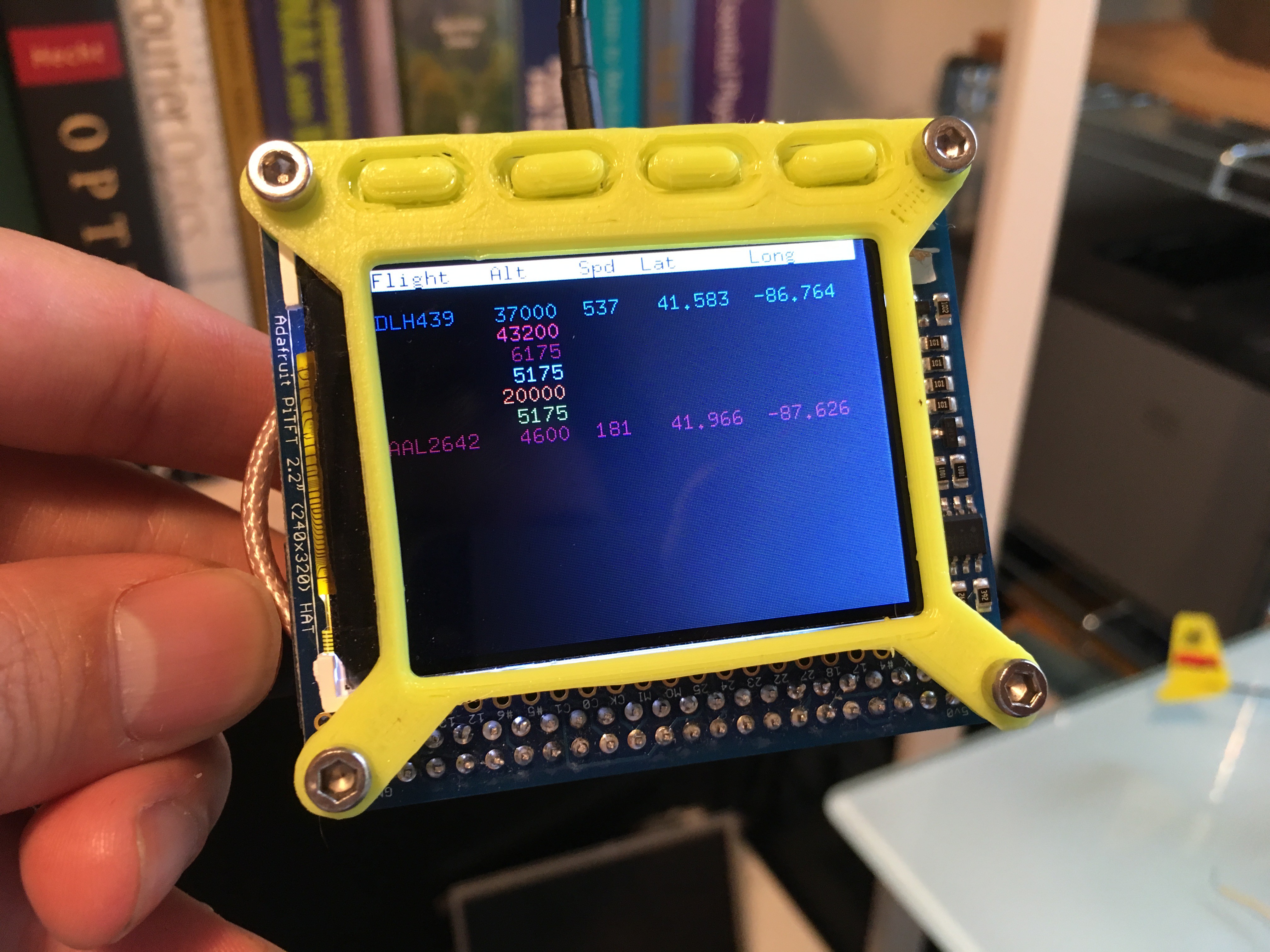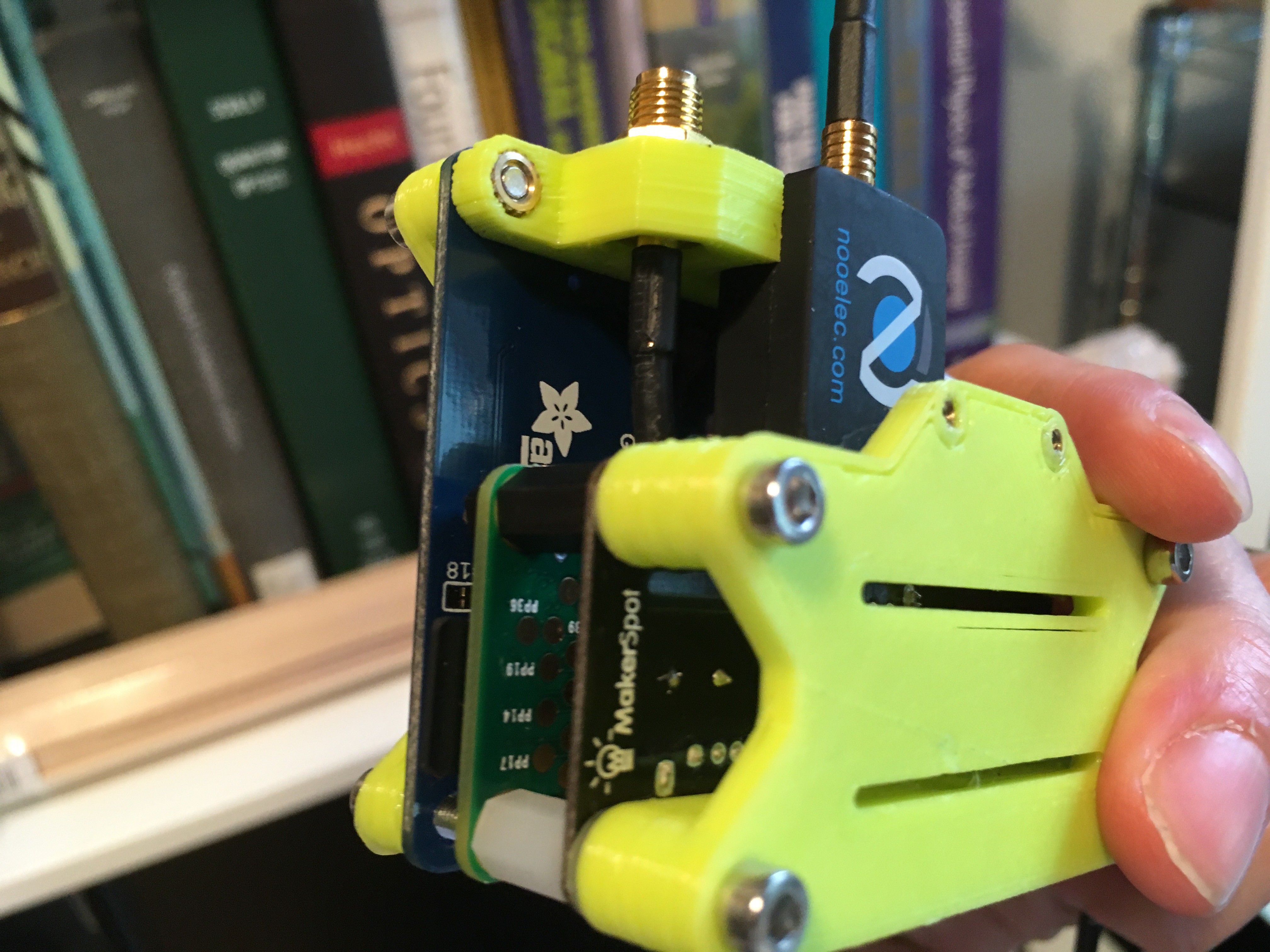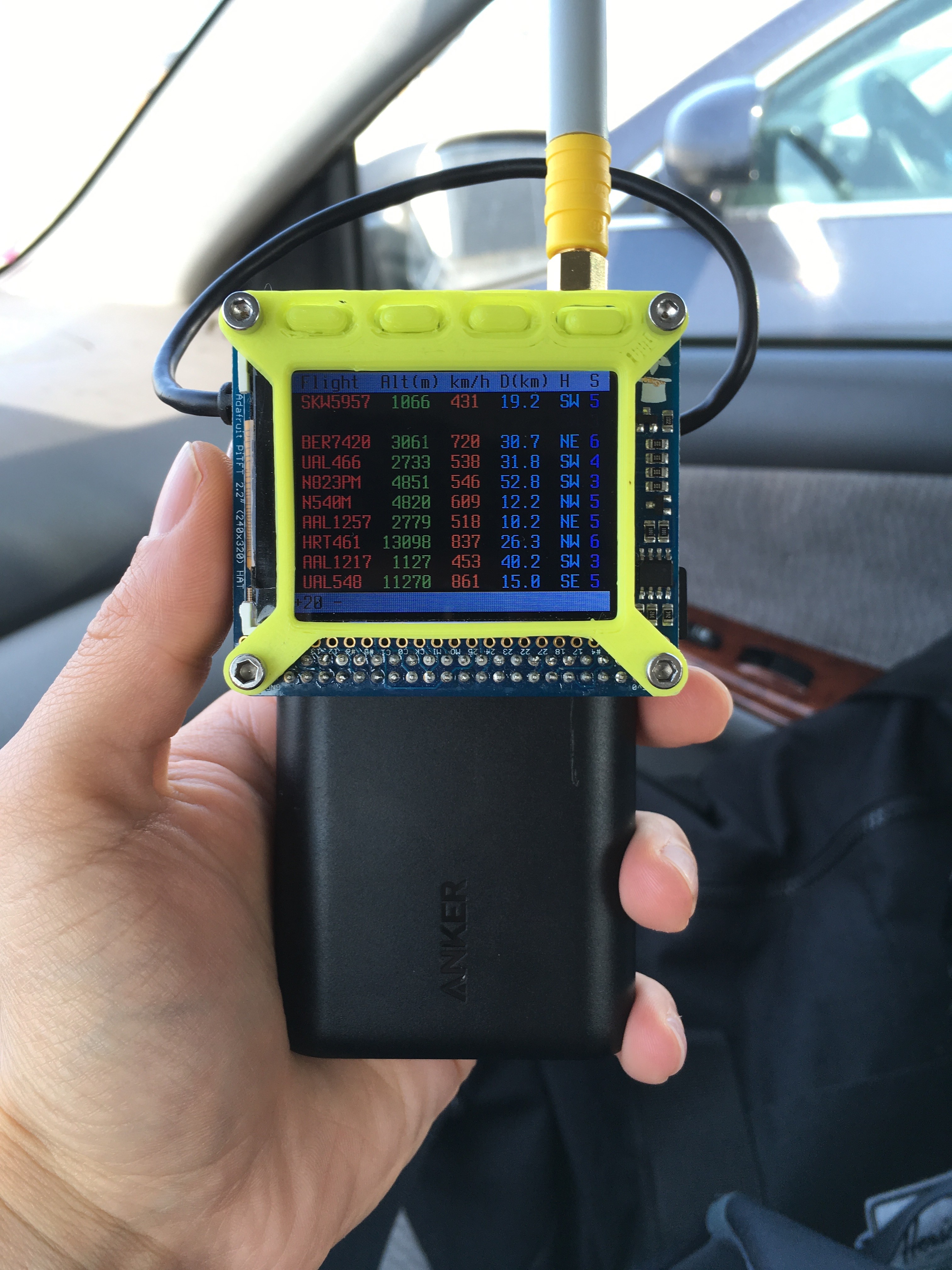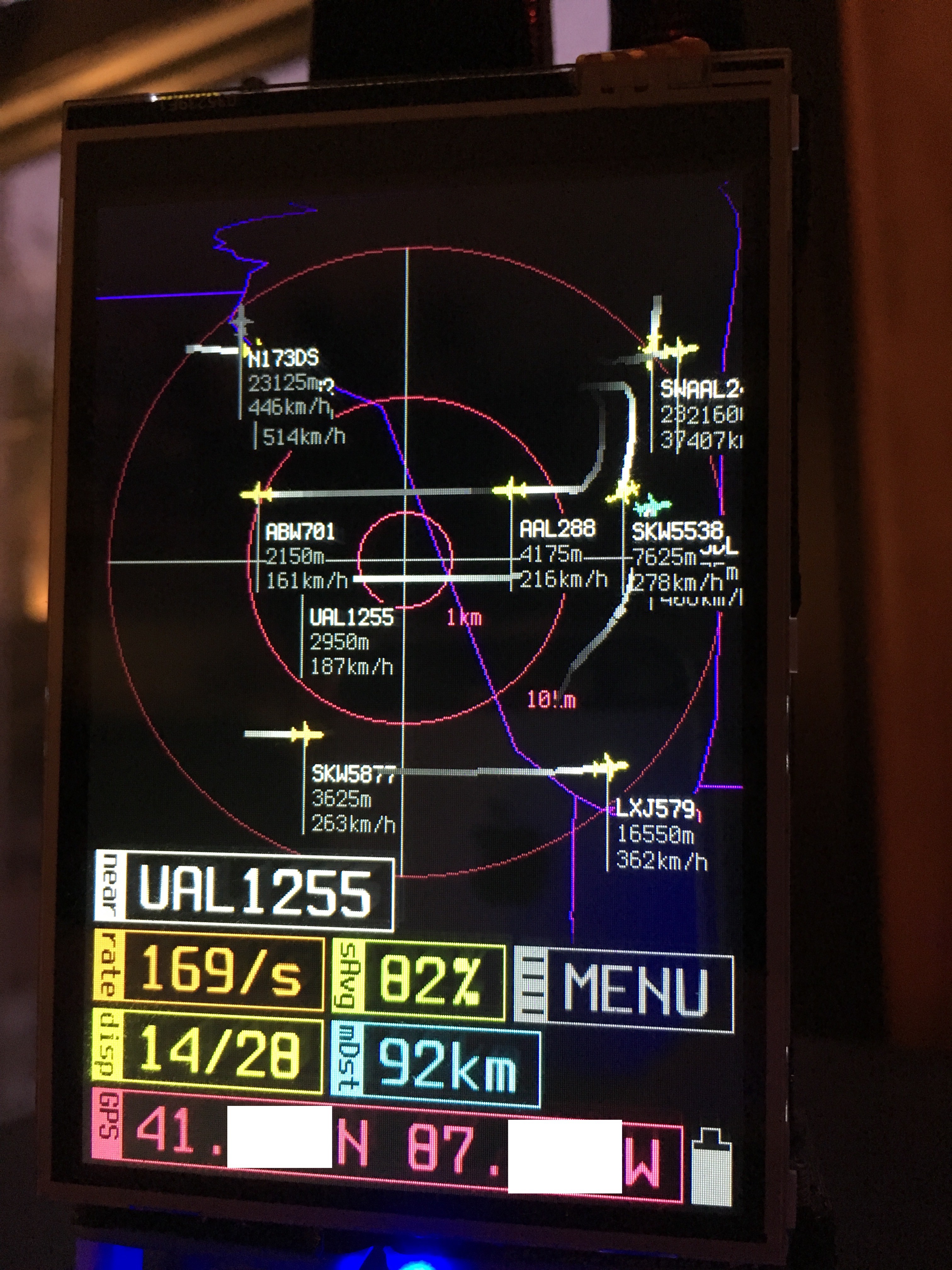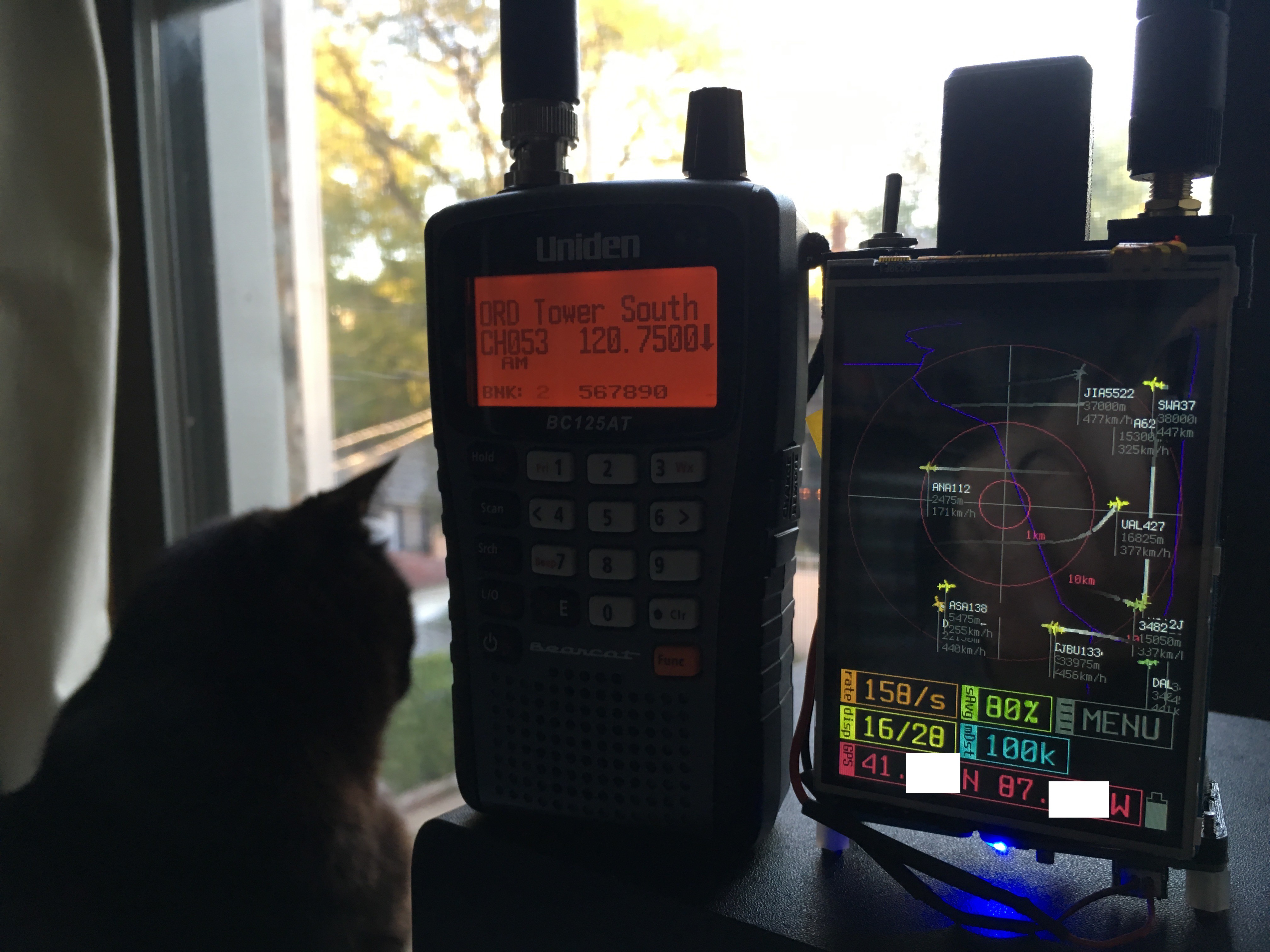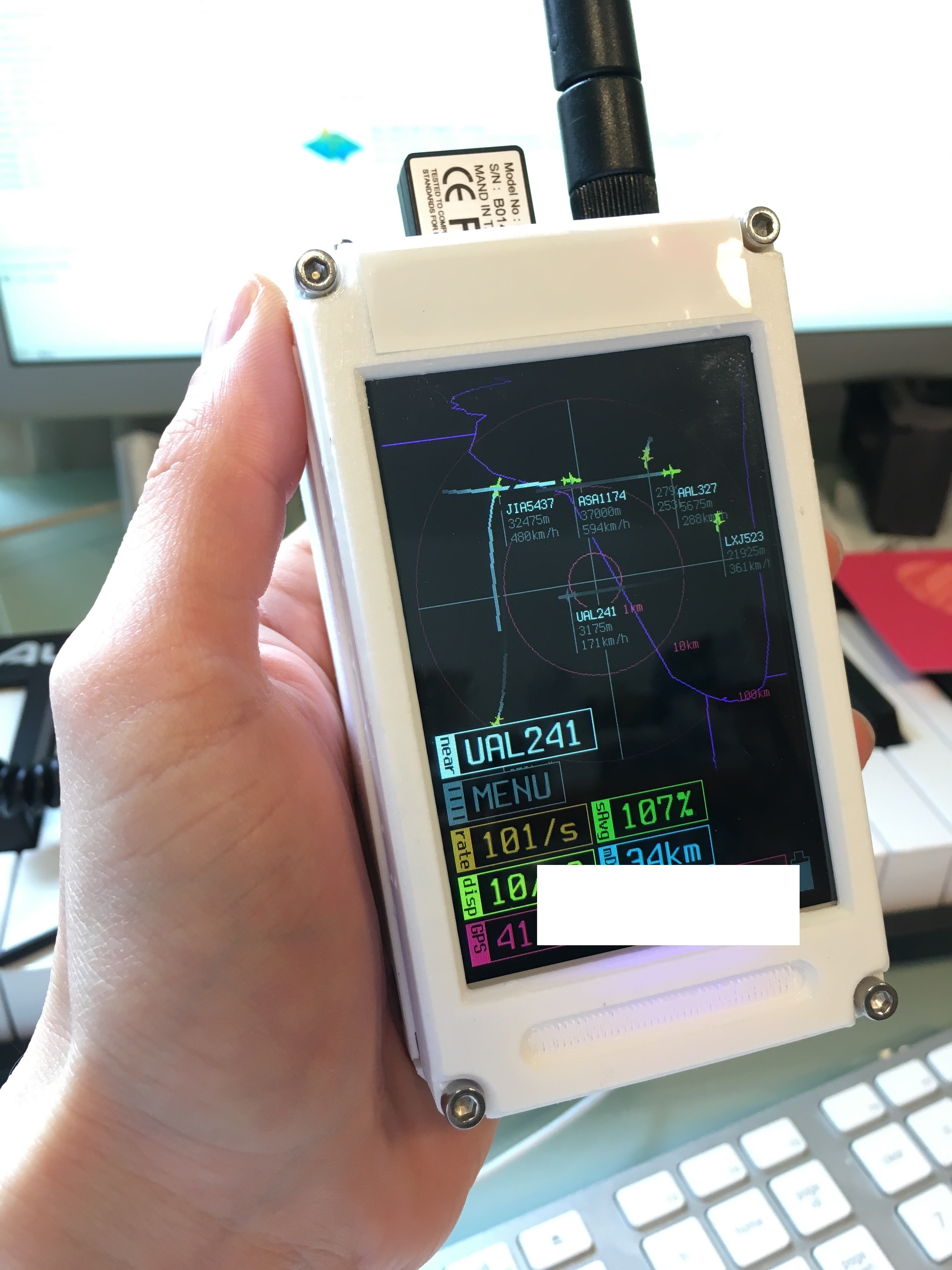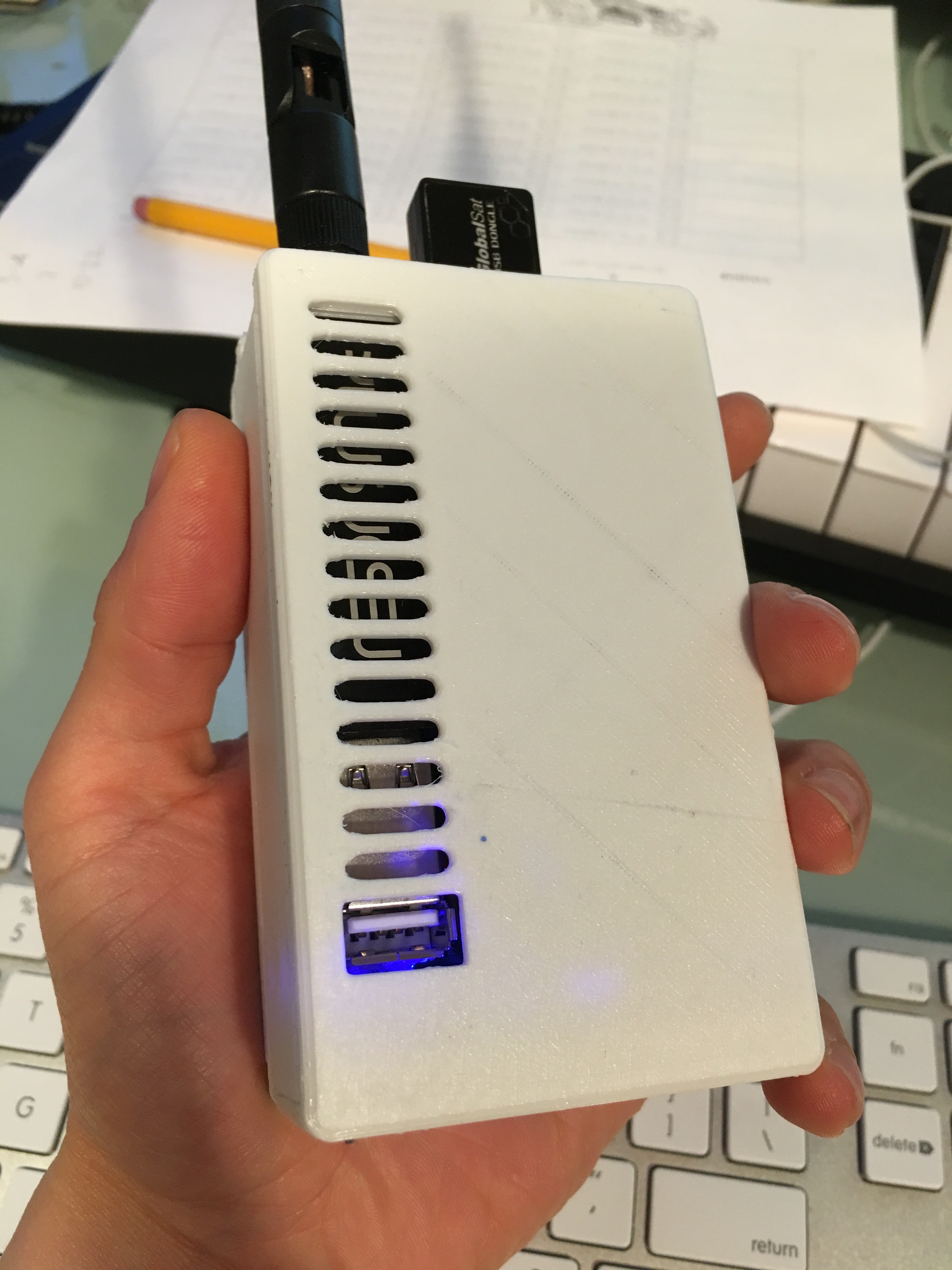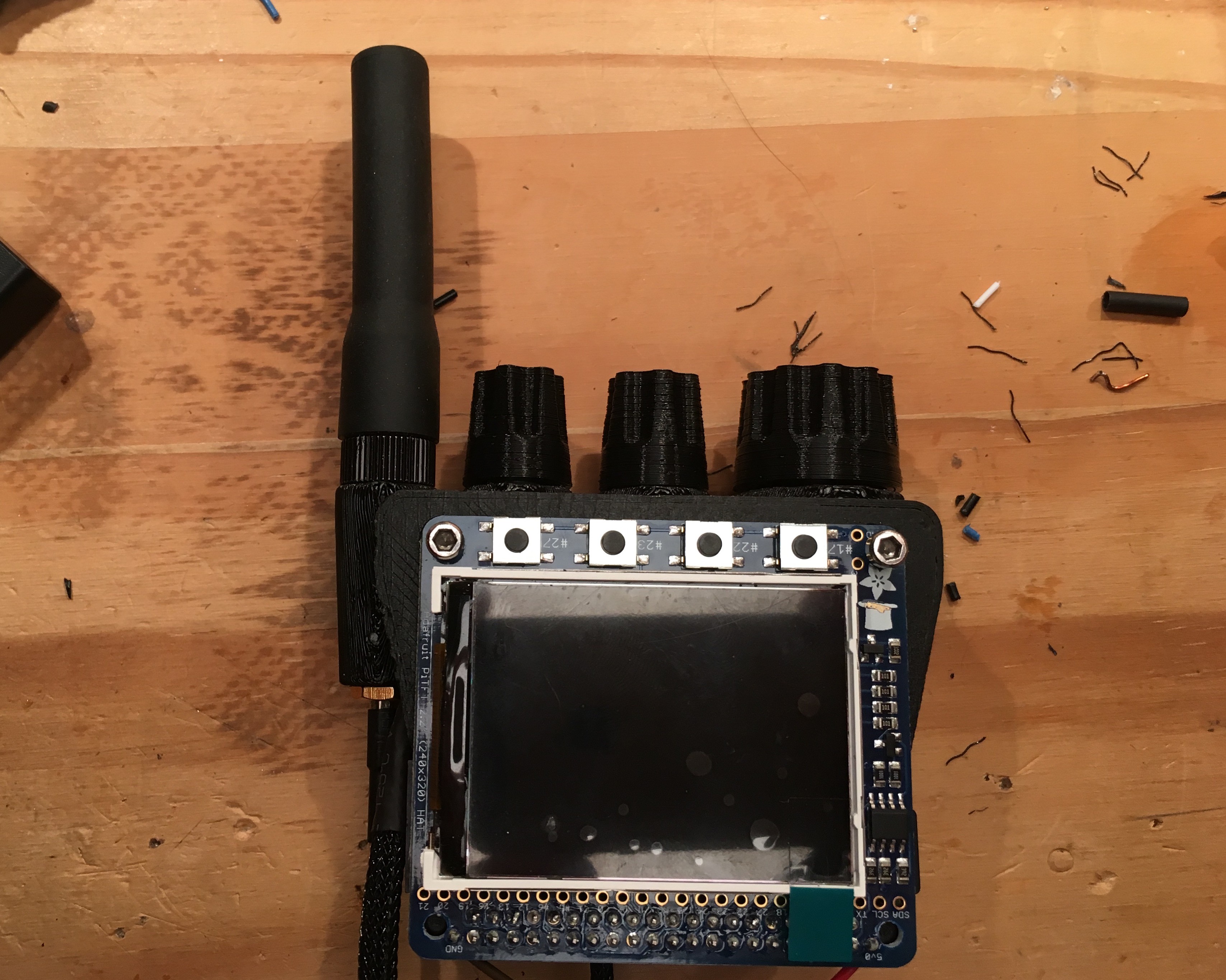-
Progress on a handheld version
12/19/2022 at 17:06 • 1 commentI started this project with a handheld plane tracker in mind, but lost interest because of the bulk and low performance I was getting out of Raspberry Pi 3s at the time. I regained interest when the compute module 4 came out, but it took forever to get one. Finally, I started putting this together a few months ago:

Inside we've got a compute module 4, a Waveshare CM4-DISP-BASE(A), a Noelec Nano 3, a Seeed Studio Lipo Rider Plus, and a 4000mAh battery.


The power supply and SDR modules are connected to the CM4 carrier with a really awful USB pigtail assembly for now:

I'm still in the trial-and-error phase of the enclosure design, but I'm working toward a version that has anodized front and rear panels so I can do away with the heat sinks, shaving off ~5mm of thickness in the process.

This still isn't a step toward the all-in-one board version of this that I really want to do, but this is compact enough to put in a jacket pocket now. I'll post the CAD files on the github when I've finished fiddling with them.
-
viz1090 on the HyperPixel round version
01/21/2022 at 02:05 • 0 commentsThe round version of Pimoroni's HyperPixel display seemed appropriate for this project. Here it is running on a Raspberry Pi Zero 2 W:

There's a branch on github called "round" that has a runtime flag to turn set the screen boundary to a circular outline.
-
Hyperpixel4 Case
11/19/2020 at 05:50 • 0 commentsI've gone through several iterations on a minimal case for the Pimoroni Hyperpixel4 display and a trimmed-down Raspberry Pi 4. This has nothing specific to this project, but it's a really nice screen for scrolling around looking at flight paths.

The latest version has a bar magnet glued on the back so I can stick it to the side of my PC.

The STL and original Blender file are on github.
-
github repo
06/27/2020 at 03:46 • 0 comments
People have been asking me to make the repository for this public for a couple years now, so here you go:
https://github.com/nmatsuda/viz1090
When I have the occasional chance to work on this I always end up adjusting the visualization and never get around to refactoring / cleanup / optimization, so I've been hesitant to put this out into the world. I'll keep working on getting this into good form for a proper release, but for now this should still build on a variety of platforms if you want to play around with it.
Some improvements since I last posted:
- Basic touchscreen interface to move around the map
- Plane labels adjust layout and visibility automatically
- Utility to load shapefile map data
The biggest feature I've wanted to include but isn't working yet is Android compatibility. A Pixel 2 phone has far better form factor, display quality, compute power, and battery life then you can put together on a Raspberry Pi platform for the same price, so I think that's the platform most people would want to run this on. I've had earlier versions of this successfully running on Android, but it's broken at the moment. There is also not a native dump1090 for Android, so you'd have to connect to a networked ADSB server.
For now, I'd recommend a Raspberry Pi 4 with a HyperPixel 4 display and piJuice battery hat.
-
Original Description
06/26/2020 at 18:37 • 0 commentsNote: this used to be the description of the project (circa early 2018), but I moved it to the project logs since this onnly covers the early stages of the project.
<p>This project started as an attempt to build a general-purpose handheld SDR receiver, which turned out to be a little too open ended for me to make much progress. I got as far as putting a 2.2" Adafruit screen on a Raspberry Pi Zero with some 3D printed knobs. </p>
<p>I realized what I really wanted was to play around with the LCD, so I took the knobs off, attached USB hub to plug the SDR dongle into, and started listing dump1090 output on the screen. </p>
<p>I also plugged this stack into a USB battery pack to try it out on the go:</p>
<p>After playing around with drawing flight info using SDL I upgraded the screen to a 3.5" IPS LCD to make more room for the plots.</p>
<p>At the moment, I'm drawing the UI from a few methods I stuck in the view1090 source, which listens to vanilla dump1090 output on a local socket. I'll put the viewer on Github when I get around to cleaning it up a little.</p>
<p>The battery, SDR dongle, Raspberry Pi, and LCD stack is really thick (over an inch even after cutting most of the RPi headers off), but I put it all into a temporary case anyway. </p>
This would work best as an all-in-one, like the awesome Gameboy" class="redactor-linkify-object">https://www.sudomod.com/forum/viewtopic.php?f=9&t=243">Gameboy AIO, but there a lot of things to figure out before I go down that route.





